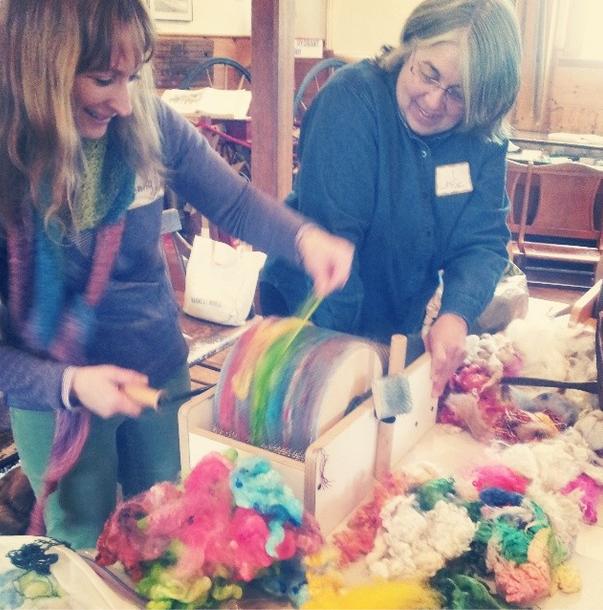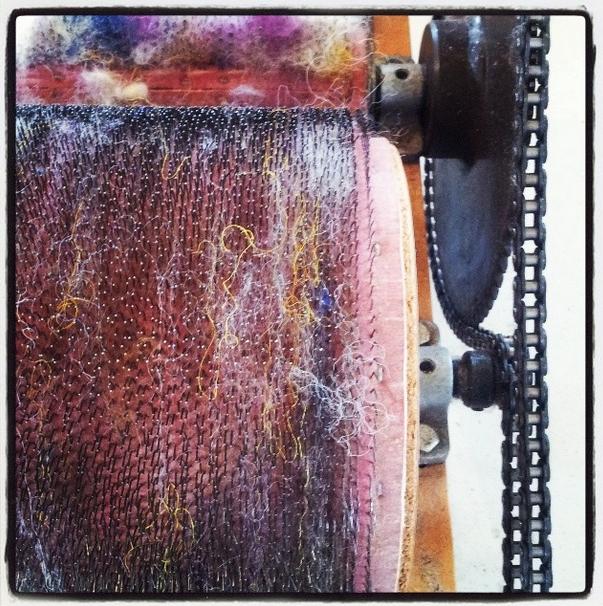A drum carder is a big investment for many spinners, and with all the options out there it’s overwhelming to try to decide what carder is the best choice for you. So here are some questions to ask yourself that will hopefully narrow down your search.

1. What types of fibers are you planning on carding most of the time?
Fine tooth carders are best for delicate and fine fibers like angora, alpaca, and fine wools like merino. They also work great for blending colors.
Coarse tooth carders are best for carding medium, long, curly, and other strong wools and creating batts with texture and chunks of color, texture, and sparkle.
2. What textures and weights of yarns are you planning on spinning?
If you are looking for mostly smooth, blended texture or fine weight yarns – a fine tooth carder will work best for you as it will comb out most of the bumps and curls from your fibers and make a batt that’s easy to spin consistently.
If you are wanting to spin bulky, textured, art yarns – a coarse tooth carder will work best for you as it will keep a lot of texture in the batt and not blend all the colors together as quickly.
3. What extra features are you looking for?

Some carders have exposed drive bands or chains that can catch the fibers that hang off the edge of the carder and create a mess if you aren’t paying attention as you are carding. Keep this in mind if you tend to have a free-spirited attitude when working with fiber. It might be best to invest in a carder with a non-exposed drive band. If you are planning on carding carefully, this design feature might not trip you up.
Different carders come in different widths. You can save money by purchasing a narrow carder, but keep in mind this will limit the size of your batts. If you are planning on spinning up significant quantities of the same blend of yarn for large projects – a small carder might slow you down. Choosing a carder with a wide drum will help your large blending projects have more consistency.
If you prefer one-of-a-kind batts and don’t plan on spinning large quantities of the same yarn, then a carder with a narrower drum might be a good way to save some money if you’re on a budget.
Some carders have a feature called a packing brush to help push the fibers down into the carder so you can fit more fiber into each batt. To save some money, you can purchase a hair comb at the store and hold it over the carder and gently press it down after each layer of fiber. It takes a little more effort, but could save you over $70 on equipment.
Most carders come with a doffer stick for removing the batt from the carder. If you purchase your carder second hand, or happen to lose the doffer stick – a flat head screwdriver works just as well!

4. Where do you want to purchase your carder?
Shopping for carders can be done both online and in-store. Here are some resources for shopping and finding the right one!
You can purchase a carder online on many marketplaces including:
If you’re looking for a carder in used condition, here are some website where you might be able to find a great deal!
- Spinners Marketplace on Ravelry
- Spinners & Weavers Housecleaning Pages
- Fiber Processing Equipment for Sale on Facebook
- Drum Carders on eBay
- Or, search your local craigslist.org for drum carders!

Learn 50+ textures to enliven your rigid heddle weaving!
Explore patterns using finger-controlled techniques & a pickup stick.Enroll here now »


Share tips, start a discussion or ask one of our experts or other students a question.
No Responses to “Choosing a Drum Carder: 4 Questions to Ask Yourself Before You Buy”